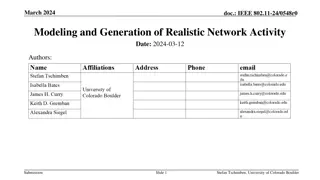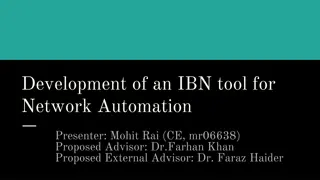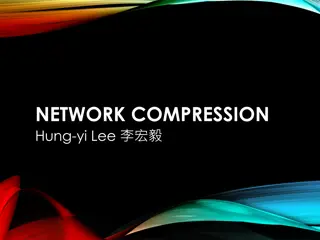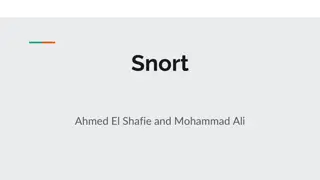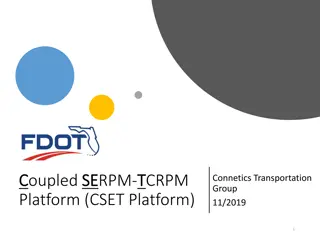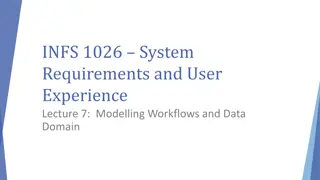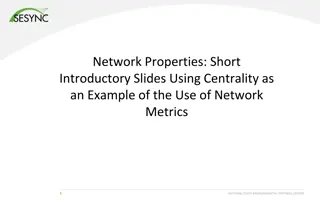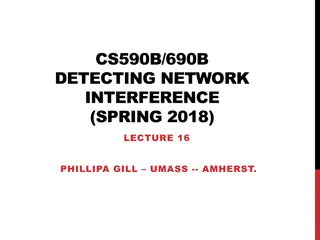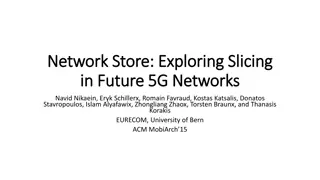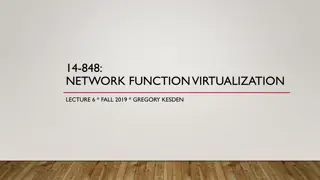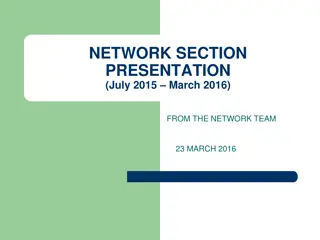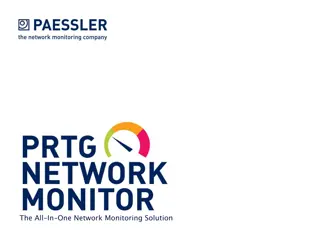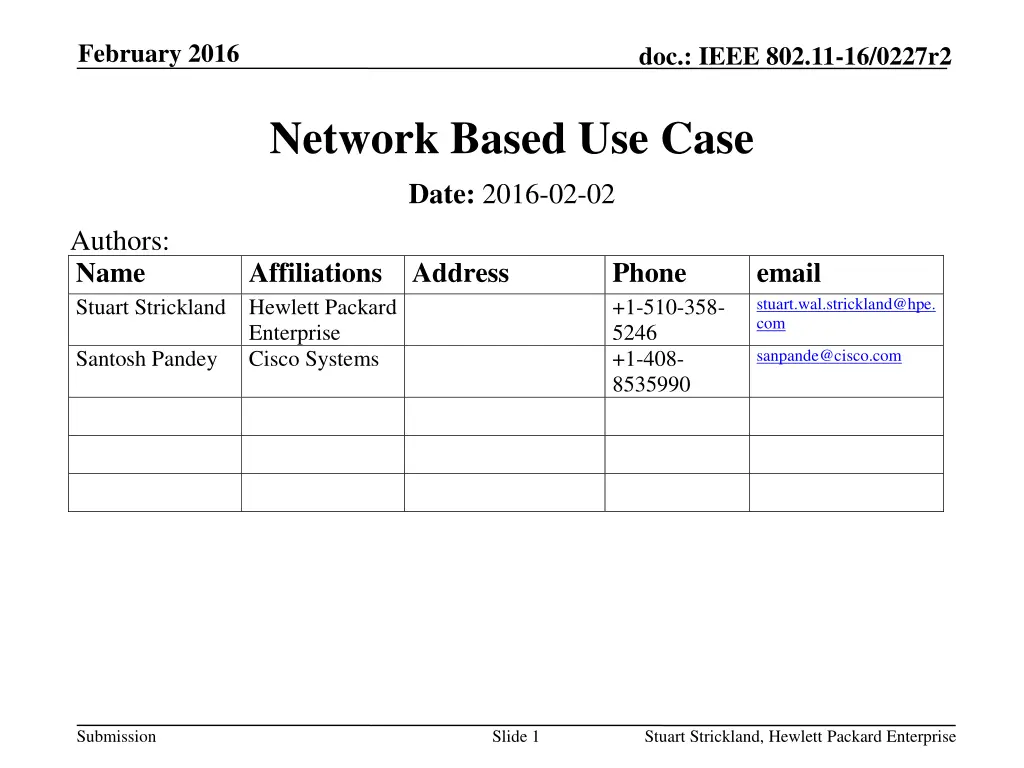
IEEE 802.11-16/0227r2 Network-Based Use Case Description
Explore the detailed use case description of an additional TGaz network-based location management scenario within a venue. The document outlines the setup, environment, expected outcomes, and impact on network resources for managing network-based location information of associated STAs.
Download Presentation

Please find below an Image/Link to download the presentation.
The content on the website is provided AS IS for your information and personal use only. It may not be sold, licensed, or shared on other websites without obtaining consent from the author. If you encounter any issues during the download, it is possible that the publisher has removed the file from their server.
You are allowed to download the files provided on this website for personal or commercial use, subject to the condition that they are used lawfully. All files are the property of their respective owners.
The content on the website is provided AS IS for your information and personal use only. It may not be sold, licensed, or shared on other websites without obtaining consent from the author.
E N D
Presentation Transcript
February 2016 doc.: IEEE 802.11-16/0227r2 Network Based Use Case Date: 2016-02-02 Authors: Name Stuart Strickland Hewlett Packard Affiliations Address Phone +1-510-358- 5246 +1-408- 8535990 email stuart.wal.strickland@hpe. com Enterprise Cisco Systems Santosh Pandey sanpande@cisco.com Submission Slide 1 Stuart Strickland, Hewlett Packard Enterprise
February 2016 doc.: IEEE 802.11-16/0227r2 Abstract This document contains the description of an additional TGaz network based location use case. Submission Slide 2 Stuart Strickland, Hewlett Packard Enterprise
February 2016 doc.: IEEE 802.11-16/0227r2 Location Based Network Management User: Venue owner, network administrator, or software system responsible for allocating and managing network resources, authenticating access, and configuring network parameters Environment: A constellation of 802.11 APs has been deployed throughout a venue according to standard network coverage and capacity guidelines for AP density and channel configuration. Each AP supports up to 512 associated STAs in each band (2.4GHz and 5GHz). The venue may be either accessible to the public or restricted to authorized visitors. Some STAs associated with or otherwise visible to the network may be capable of supporting NGP; others may not. Some may have single antennas; others may have multiple antennas. No assumptions are made about any venue-specific applications running on the STA or whether the STA or its user has any awareness of its own location. Use case: 1. STAs are distributed throughout the venue, entering and leaving the venue continuously. STAs may be mobile phones carried by visitors, mobile or stationary wireless appliances, or tags attached to other assets APs detect each STA as it enters or departs the venue or a region of the venue, triggering the network to coordinate measurements among proximate APs, which may be operating on other channels, to determine and continuously monitor the location of each STA The network maintains information about the location of each associated STA, its path through the venue, its network activity, resource consumption, credentials, QoS requirements, and other information the network user deems relevant to its objectives Based upon this information, the network user allocates resources, configures network parameters, and generates alerts in real time, and may create off-line recommendations to modify the physical configuration of the network or take other action Expected: All associated STAs may be located and concurrently tracked Horizontal accuracy: 2 m @ 90% in open space; resolvable to a specific room in enclosed space @ 99% Vertical accuracy: 2 m @ 90% in open space; resolvable to floor level in enclosed space @ 99% Latency: 500 ms (post association) Frequency: 1 Hz Impact on network resources: < 10% of available airtime (Note: The frequency and number of STAs tracked must be configurable by the network user to accommodate venue-specific requirements and manage the availability of network resources) 2. 3. 4. Submission Slide 3 Stuart Strickland, Hewlett Packard Enterprise
February 2016 doc.: IEEE 802.11-16/0227r2 Motion on submission 16-0227/r2 Motion To instruct the use case document editor to add the use case depicted by slide 3 of submission 11-16-0227/r2 to the TGaz NGP use case document 11-16-0137. Move: 2nd: Y: N: A: Submission Slide 4 Stuart Strickland, Hewlett Packard Enterprise
February 2016 doc.: IEEE 802.11-16/0227r2 References https://mentor.ieee.org/802.11/dcn/16/11-16-0137-00- 00az-ngp-use-case-document.pptx Submission Slide 5 Stuart Strickland, Hewlett Packard Enterprise

